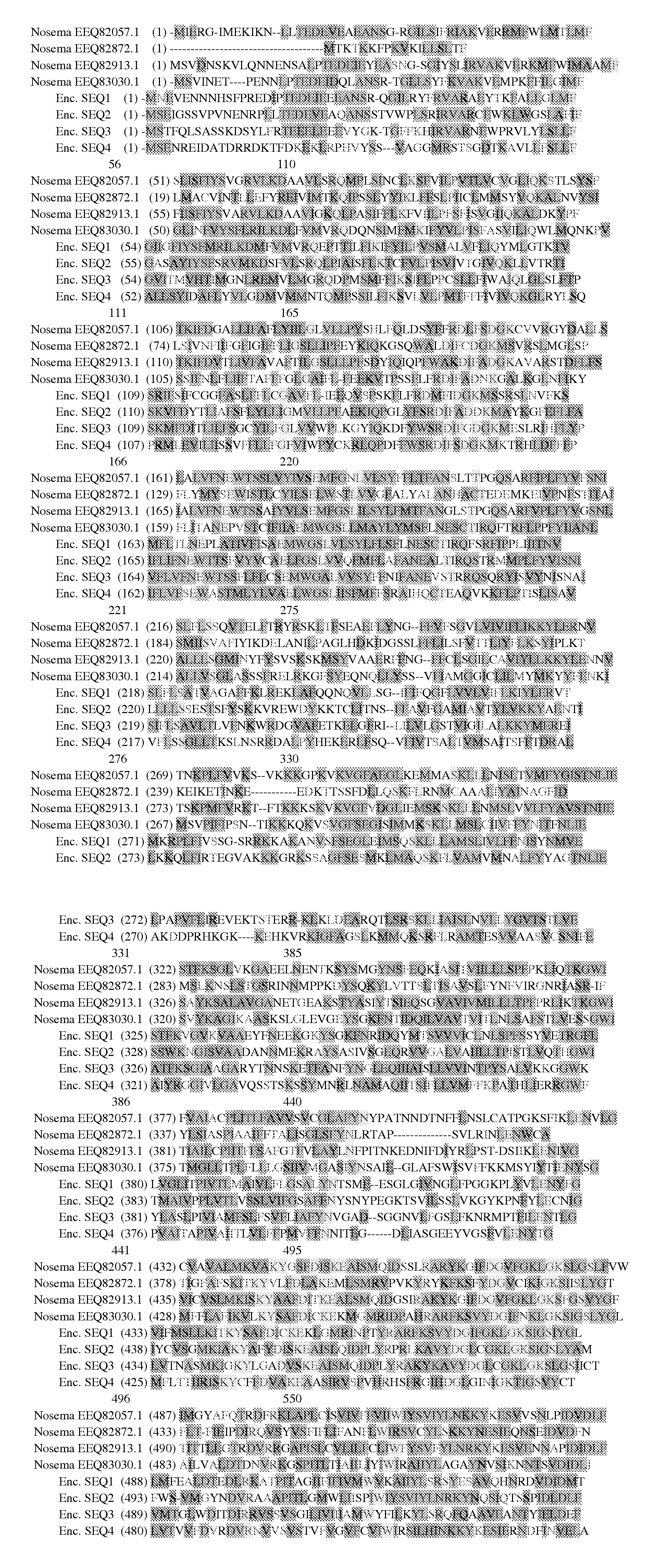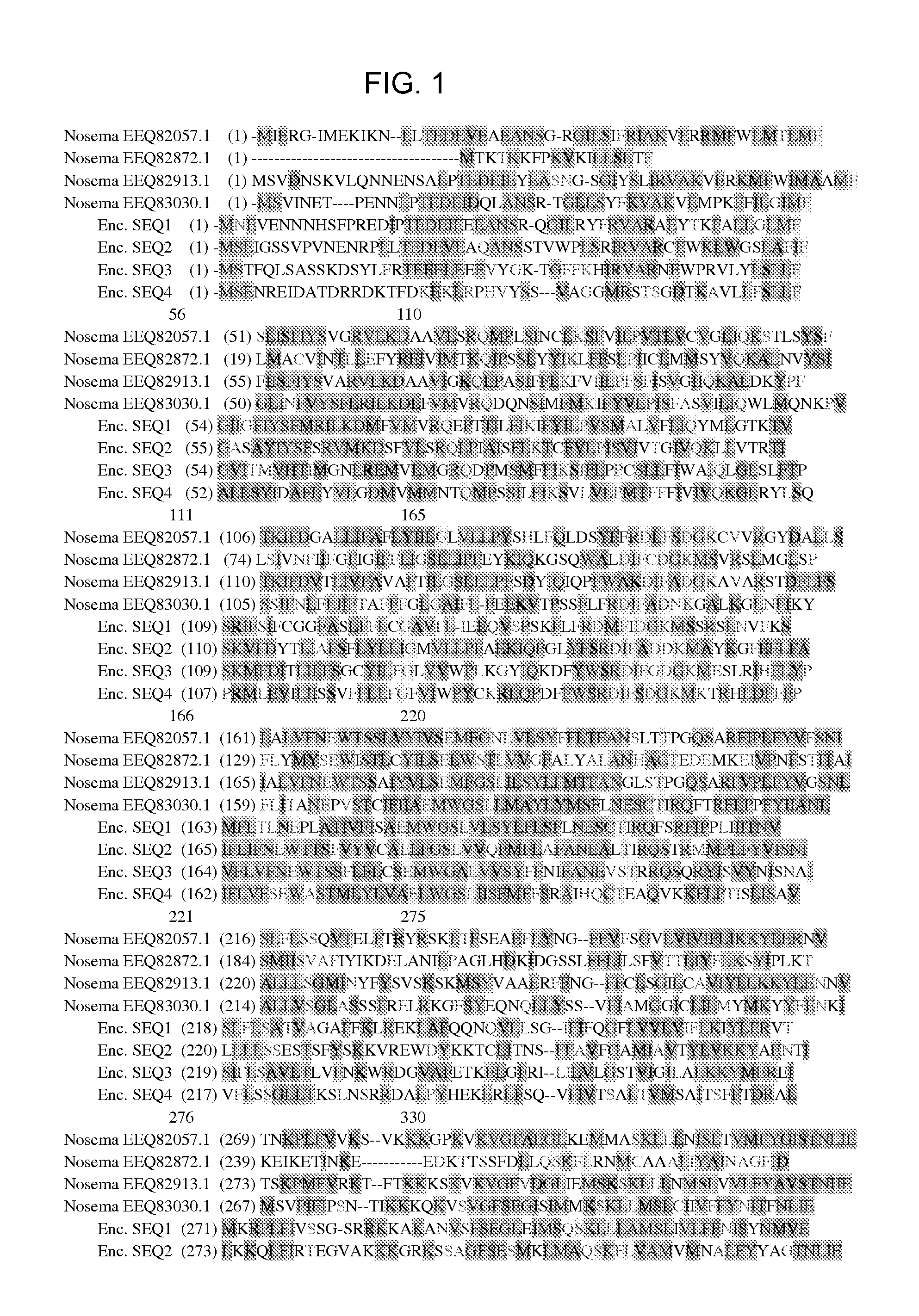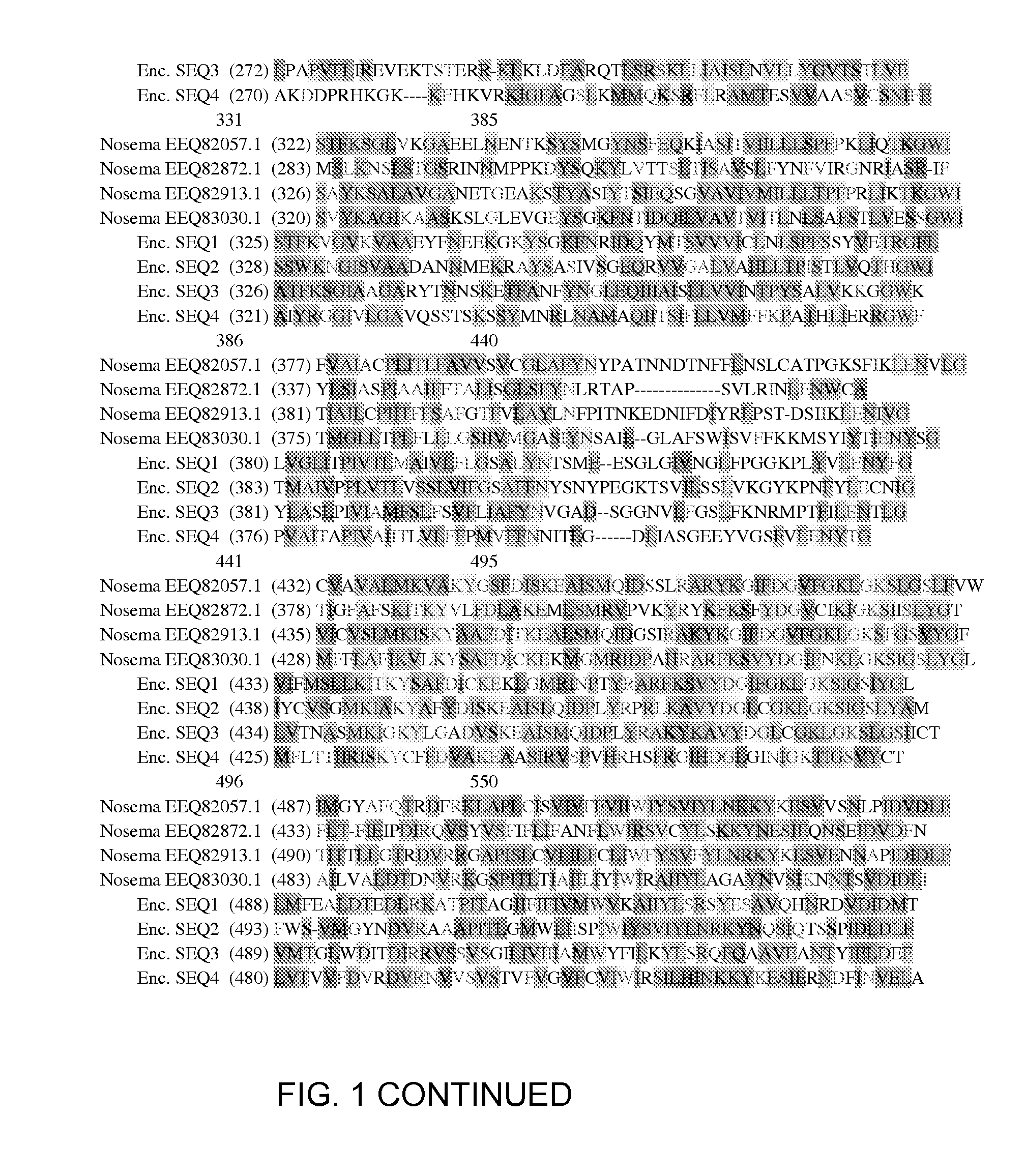Prevention and treatment of nosema disease in bees
a technology of nosema and bees, which is applied in the field of prevention and treatment of nosema disease in bees, can solve the problems of fumigillin, serious toxic side effects, and deterioration of potency, and achieve the effects of reducing the susceptibility of bees
- Summary
- Abstract
- Description
- Claims
- Application Information
AI Technical Summary
Benefits of technology
Problems solved by technology
Method used
Image
Examples
example 1
Nosema ceranae Genome Homologues to ATP / ADP Transporter Proteins Found in Encephalitozoon cuniculi
[0177]The N. cerana genome has been published. FIG. 1 shows a sequence alignment between the mitosomal and non-mitosomal ATP transporter proteins found in Encephalitozoon cuniculi and four homologues identified in N. cerana.
example 2
dsRNA Targeting Nosema Mitosomal and Non-Mitosomal ATP / ADP Transporter Homologues Reduces Nosema Spore Counts and Mortality Following Infection
[0178]Since Nosema rarely reduces nurse bee lifespan in box experiments due to the feeding of the bees ad-libitum (not shown), indicators for reduced lifespan are best achieved in a hive setting. In our box experiments, no difference was observed in forager lifespan within the time span of the experiment. When bee lifespan was evaluated in the more natural mini-hive setting (FIG. 2), it was clearly evident that bees in untreated hives succumb earlier to Nosema infection in relation to bees from hives fed with dsRNA targeting 4 Nosema mitosomal and non-mitosomal ATP / ADP transporter homologues (NC123, NC006, NC014 and NC017).
[0179]In order to determine the effectiveness of feeding dsRNA in prevention of Nosema, parasite levels in dead bees from Nosema infected samples were determined. In all box and mini-hive experiments from 7 days post infect...
example 3
dsRNA Targeting Nosema Mitosomal and Non-Mitosomal ATP / ADP Transporter Homologues Reduces Hunger (Proboscis Extension Response) in Bees Infected with Nosema cerana
[0180]In order to determine whether feeding N. cerana mitosomal and non-mitosomal ATP / ADP-specific dsRNA reduces energetic stress in bees following N. cerana infection, Proboscis Extension Reflex (PER), an indicator of hunger, was tested in treated and control bees.
[0181]Metabolic stress following N. cerana infection in bees manifests in increased responsiveness to very low concentrations of sucrose, with the PER at low (N. cerana mitosomal and non-mitosomal ATP / ADP-specific dsRNA increases the responsiveness threshold of the treated bees, compared to that of untreated bees. Although at higher (10-30%) sucrose concentration and at medium concentration of sucrose (1-3%) the discernible difference was not statistically significant, at the lower concentrations (0.1-0.3%), the difference in response was significant (pN. ceran...
PUM
| Property | Measurement | Unit |
|---|---|---|
| temperature | aaaaa | aaaaa |
| total volume | aaaaa | aaaaa |
| total volume | aaaaa | aaaaa |
Abstract
Description
Claims
Application Information
 Login to View More
Login to View More - R&D
- Intellectual Property
- Life Sciences
- Materials
- Tech Scout
- Unparalleled Data Quality
- Higher Quality Content
- 60% Fewer Hallucinations
Browse by: Latest US Patents, China's latest patents, Technical Efficacy Thesaurus, Application Domain, Technology Topic, Popular Technical Reports.
© 2025 PatSnap. All rights reserved.Legal|Privacy policy|Modern Slavery Act Transparency Statement|Sitemap|About US| Contact US: help@patsnap.com



